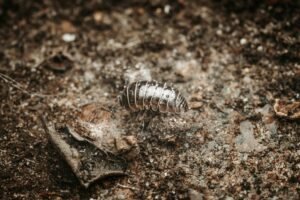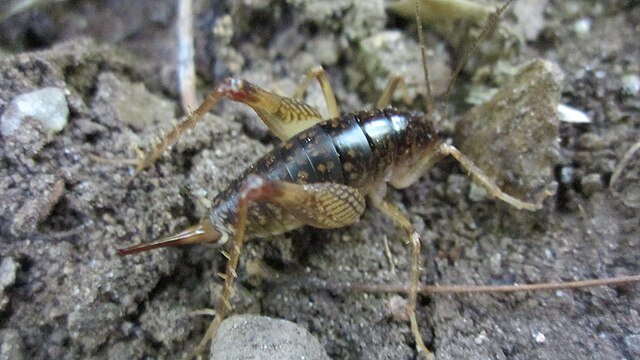Pillbugs Exposed: Identification, Hidden Facts, and the Best Ways to Get Rid of Them
 Pillbugs are one of the most misunderstood creatures that people find in their gardens and homes. They are small, armored, gray critters that many mistake for insects. In reality, pillbugs are crustaceans, related to crabs and shrimp. Because of their ability to roll up into a ball, they are often called “roly-polies.”
Pillbugs are one of the most misunderstood creatures that people find in their gardens and homes. They are small, armored, gray critters that many mistake for insects. In reality, pillbugs are crustaceans, related to crabs and shrimp. Because of their ability to roll up into a ball, they are often called “roly-polies.”
This article explains everything you need to know about pillbugs: how to recognize them, how they differ from sowbugs, what role they play in the environment, and how to control them when they become a nuisance.
What Are Pillbugs?
Pillbugs belong to the family Armadillidiidae, a subgroup of land isopods. Armadillidiidae Family, which includes several species of land isopods adapted to live outside water. The most familiar members are Armadillidium vulgare and Armadillidium nasatum, both common in Europe, North America, and Australia. While they look very similar, Armadillidium nasatum is slightly larger and has a small forward “nose-like” projection on its head, giving it a distinct appearance. These species share the same habits—living under stones, wood, and mulch—and both can roll into a ball when disturbed.
Armadillidium nasatum Habitat and Behavior
Armadillidium nasatum prefers warm, humid environments with plenty of decaying organic matter. It plays an important ecological role as a decomposer but can become a nuisance when it enters greenhouses, basements, or damp storage areas. Like other pillbugs, it breathes through gill-like structures that require constant moisture, so managing humidity and removing wet debris are the best ways to prevent infestations.
They are oval, gray-to-brown crustaceans about 6–12 mm long. Their most famous feature is their defense mechanism: when threatened, they curl into a tight ball, a behavior called conglobation. This makes them look like tiny armored balls, protecting them from predators.
Key features of pillbugs:
Hard, segmented exoskeleton
Seven pairs of legs
Two antennae
Ability to roll into a ball (unlike sowbugs)
Pillbugs vs. Sowbugs
Pillbugs are often confused with sowbugs, but there are important differences:
Pillbugs – Can roll into a tight ball, no tail-like appendages.
Sowbugs – Flattened body, two small tails at the back, cannot roll up.
Both need moisture and are found in damp environments, but pillbugs are more resilient and can survive slightly drier conditions compared to sowbugs. If you see small armored critters in your garden, check whether they roll up—this is the easiest way to tell them apart.
Where Do Pillbugs Live?
Pillbugs thrive in environments with high humidity and organic matter. They are commonly found:
Under rocks, logs, and mulch
In compost heaps and leaf piles
Around foundations, crawlspaces, and basements
In potted plants and greenhouses
They are nocturnal, hiding during the day and coming out at night to feed.
What Do Pillbugs Eat?
Pillbugs are detritivores, meaning they feed mostly on decaying organic matter. They recycle plant material and enrich the soil with nutrients. However, in high numbers, they may chew on living plants, particularly seedlings, roots, and soft fruits.
Foods pillbugs target:
Decaying leaves and wood
Tender roots and sprouts
Fruits like strawberries
Vegetable seedlings
Are Pillbugs Dangerous?
Pillbugs do not bite, sting, or carry diseases. They are not harmful to humans or pets. The biggest risk is in the garden, where they can damage young plants if their population grows too large.
Indoors, they are more of a nuisance than a real threat. They often wander inside during wet weather but die quickly because indoor air is too dry for them to survive long.
Pillbugs in the Garden: Good or Bad?
The answer depends on how many there are.
In small numbers: They are beneficial, breaking down organic matter and helping soil fertility.
In large numbers: They can cause problems by eating sprouts, roots, and fruits.
This balance is similar to sowbugs. Both species are useful recyclers, but when conditions (like too much mulch or water) allow their population to explode, they shift from helpful to harmful.
How to Get Rid of Pillbugs Indoors
Since pillbugs cannot survive long indoors, the key is preventing them from getting inside in the first place.
Reduce humidity – Fix leaks, ventilate basements, and use dehumidifiers.
Seal entry points – Close cracks, gaps, and door thresholds.
Remove hiding spots – Don’t leave damp cardboard, wood, or organic debris indoors.
Physical removal – Vacuum or sweep them when you find them.
If you see many pillbugs inside, it usually means outdoor conditions are pushing them indoors.
Outdoor Control of Pillbugs
The most effective way to control pillbugs outside is to reduce the damp, organic-rich habitats they love.
Reduce mulch depth – Keep mulch less than 2 inches thick.
Avoid overwatering – Let the soil surface dry between watering.
Keep foundations clear – Move firewood, stones, and debris away from the house.
Raise seedlings – Grow young plants in pots or raised beds until they are strong enough.
Encourage natural predators – Ground beetles, spiders, and centipedes eat pillbugs.
Natural and Homemade Pillbug Control
Home remedies work well when populations are not too high:
Potato traps – Hollow out a potato, place it in the garden, and collect pillbugs the next day.
Beer traps – Similar to slug traps; pillbugs fall in and drown.
Cardboard shelters – Place damp cardboard, which attracts them, and remove it daily.
Diatomaceous earth – Spread around plants; it scratches and dehydrates pillbugs.
These methods are cheap, safe, and eco-friendly.
Chemical Control of Pillbugs
Chemical control should be the last option. When infestations are severe, certain residual sprays or granular baits labeled for isopod control can be applied. Always follow the product label and local regulations. Misuse of chemicals can harm beneficial organisms and contaminate soil and water.
Q&A
Do pillbugs bite?
No, they do not bite people or pets. We are safe from them.
Why do I see pillbugs in my house?
They usually wander indoors when outdoor conditions are too wet or dry, searching for moisture.
Are pillbugs the same as sowbugs?
No. Pillbugs roll into a ball, while sowbugs cannot. Sowbugs also have tail-like appendages.
Are pillbugs good or bad for the garden?
Both. They recycle organic matter (good), but in large numbers they damage seedlings (bad).
How to get rid of pillbugs naturally?
Reduce mulch, avoid overwatering, and use potato or beer traps.
Pillbugs Around the World
USA & Canada – Common in gardens, basements, and crawlspaces.
Europe – Found in moist Mediterranean gardens and compost piles.
Australia – Gardeners often complain about pillbugs damaging young vegetables.
Asia – Known to appear in rice paddies and humid regions.
Despite regional differences, the same principles apply: manage moisture, clean debris, and use traps when needed.
Prevention Tips
To avoid pillbug problems:
Keep mulch and soil dry near the house
Store firewood off the ground
Seal foundation cracks
Improve yard drainage
Ventilate crawlspaces and basements
Prevention is always easier and safer than dealing with an infestation later.
Read more in our blog and explore guides on many other enemies. Stay informed.
Disclaimer
This article is for informational purposes only. Pest control laws and approved chemicals vary by country. For best results and legal safety, we strongly recommend contacting a licensed pest control professional in your local area. Always make sure that the pest control technician is properly certified or licensed, depending on your country’s regulations. It’s important to confirm that they only use approved products and apply them exactly as instructed on the product label. In most places in Europe, UK, or USA, following label directions is not just best practice—it’s the law.
Author
Nasos Iliopoulos
MSc Agronomist & Certified Pest Control Expert
Scientific Director, Advance Services (Athens, Greece)
Licensed Pest Control Business – Ministry of Rural Development & Food (GR)
References
Colorado State University – Sowbugs and Pillbugs
https://extension.colostate.edu/topic-areas/insects/sowbugs-and-pillbugs-5-505/

